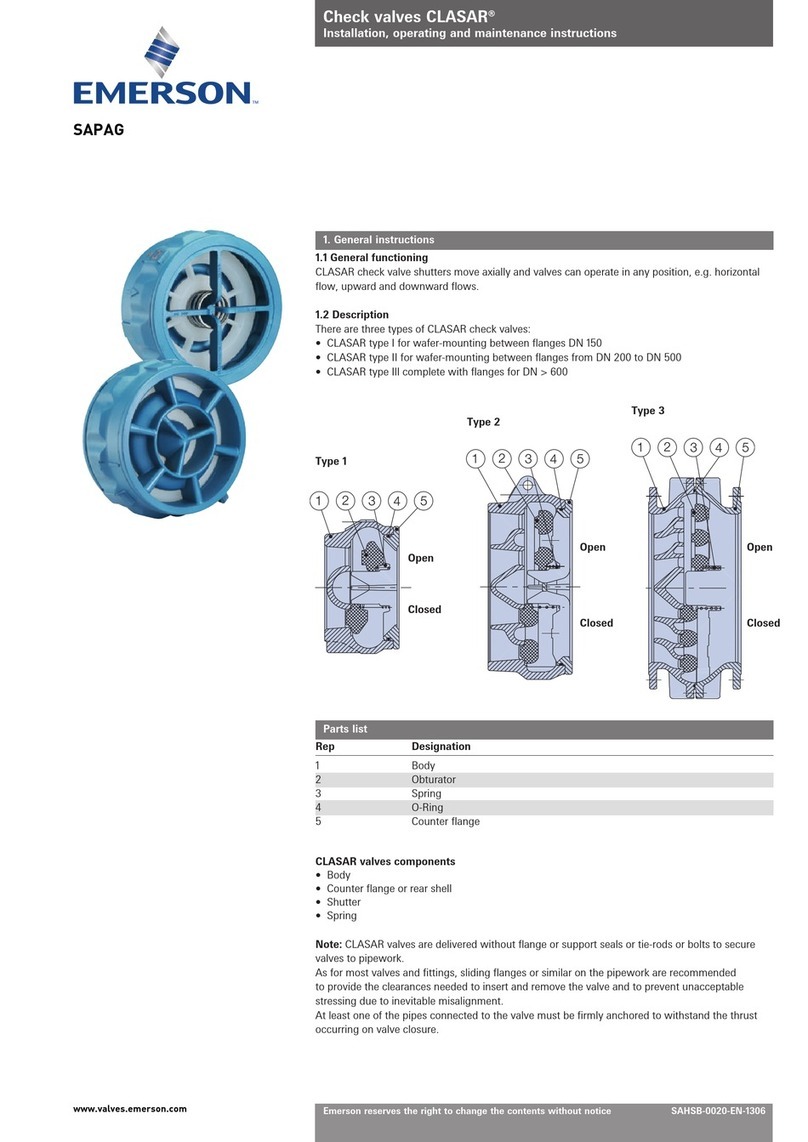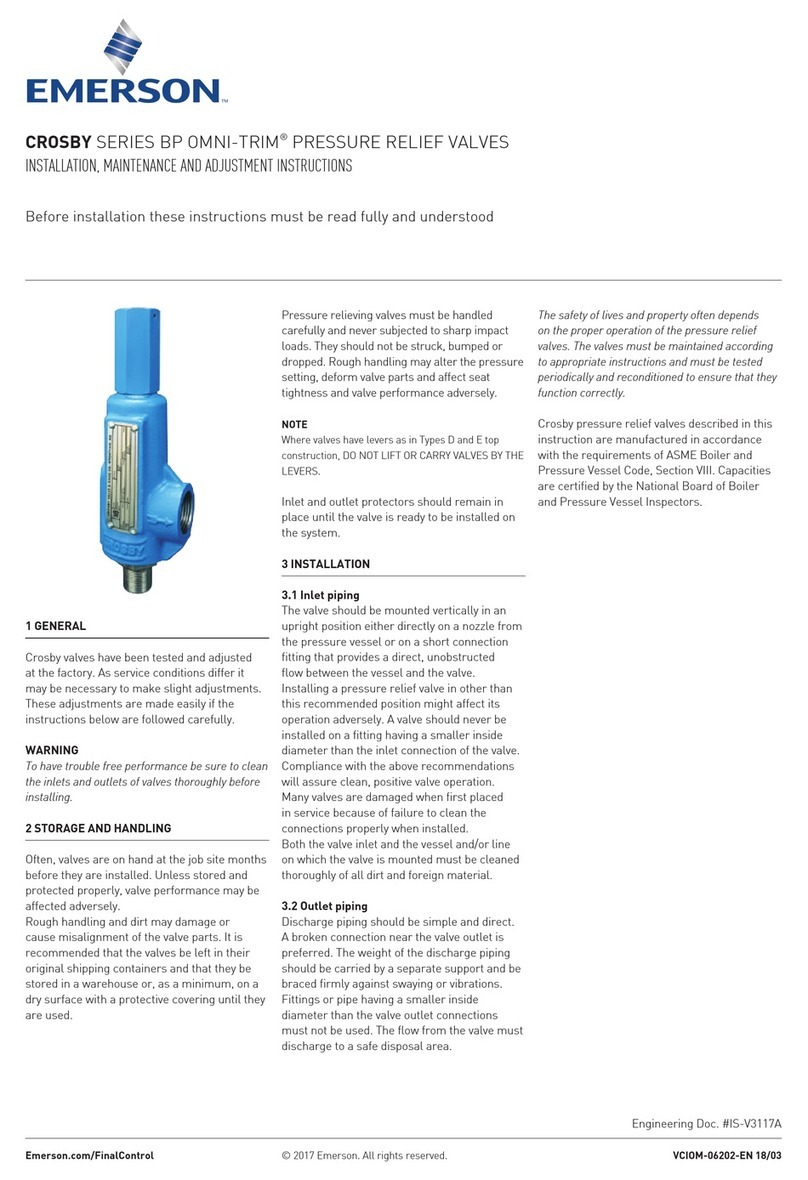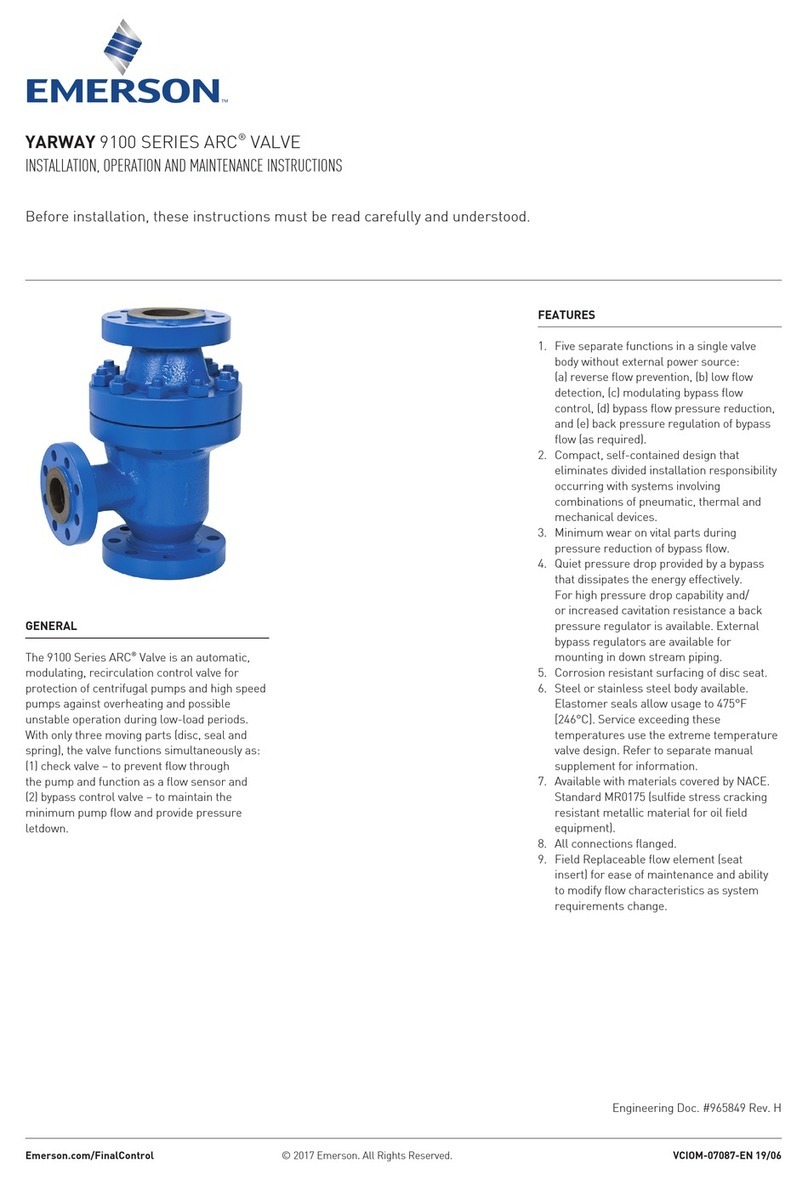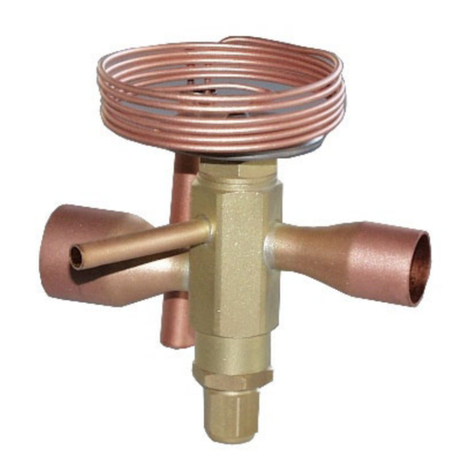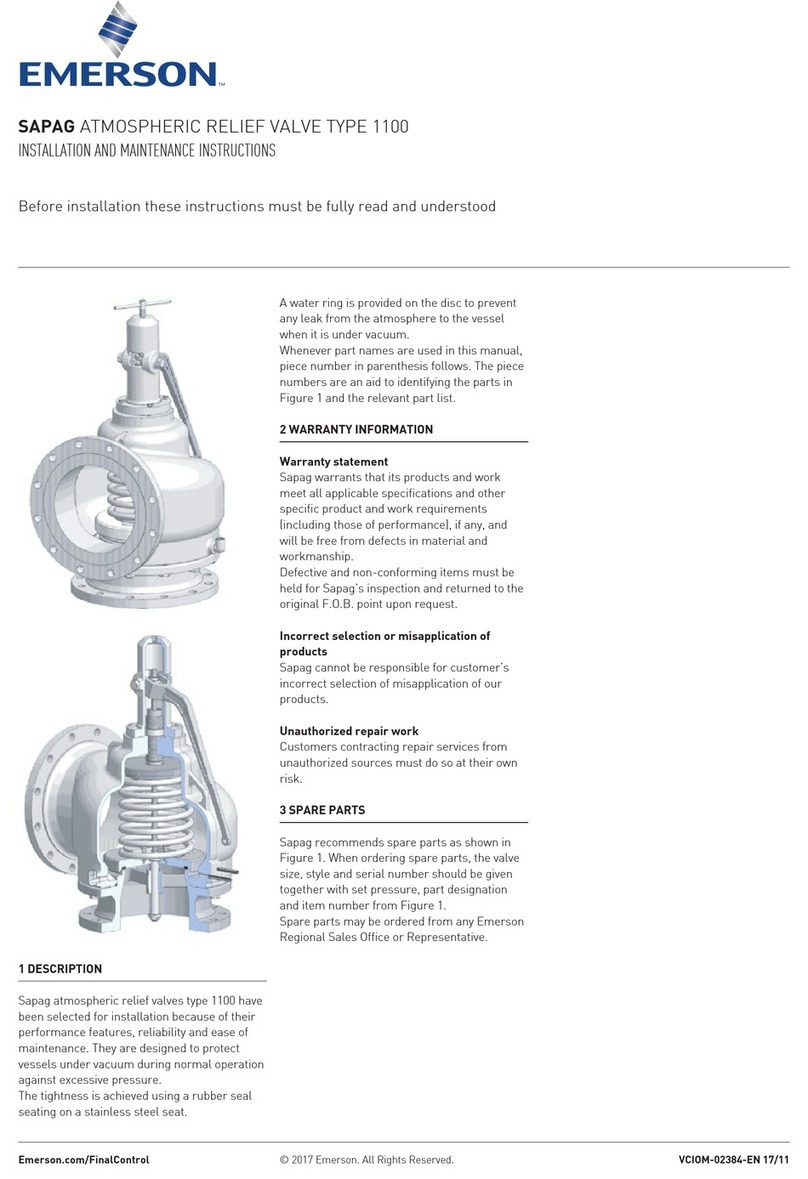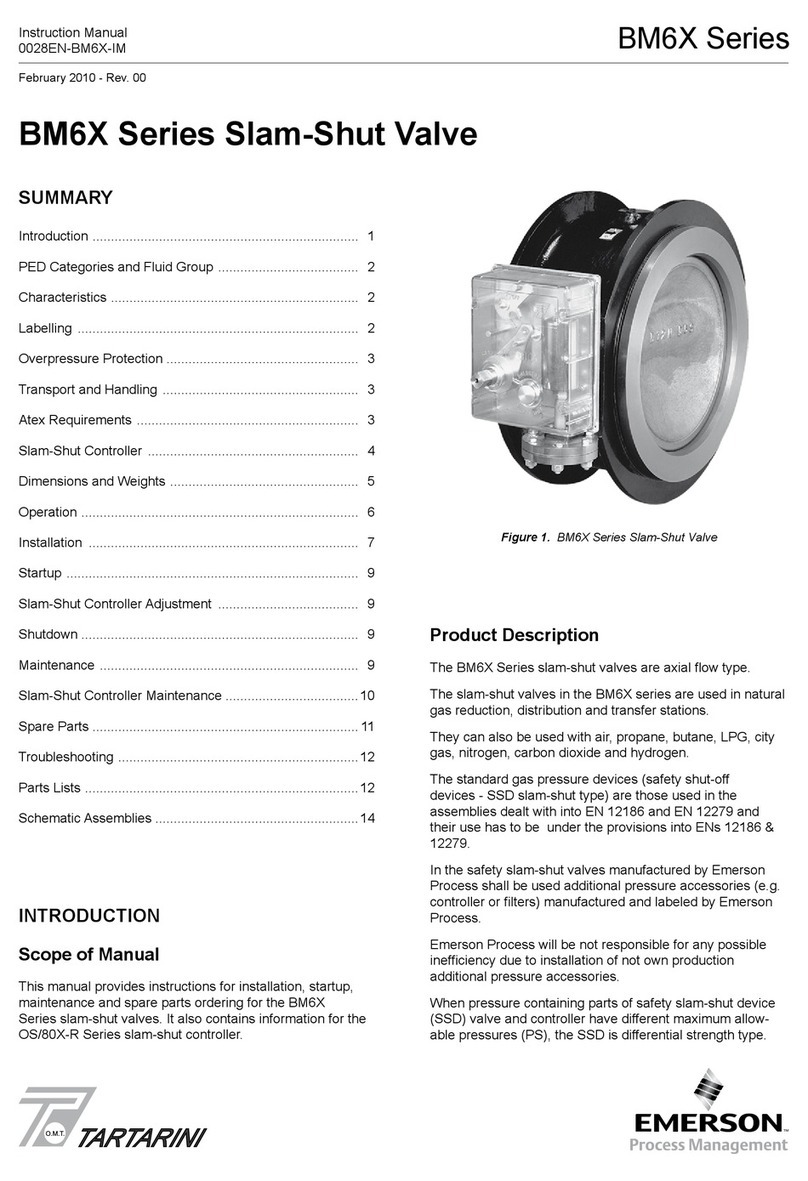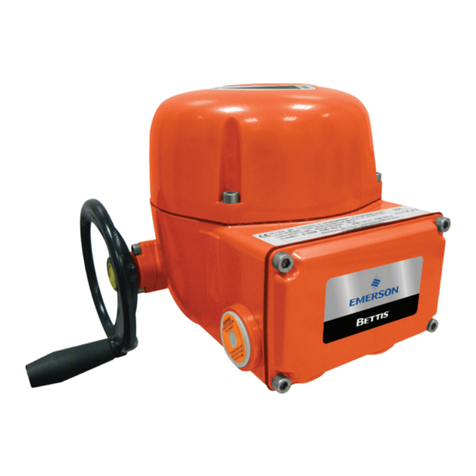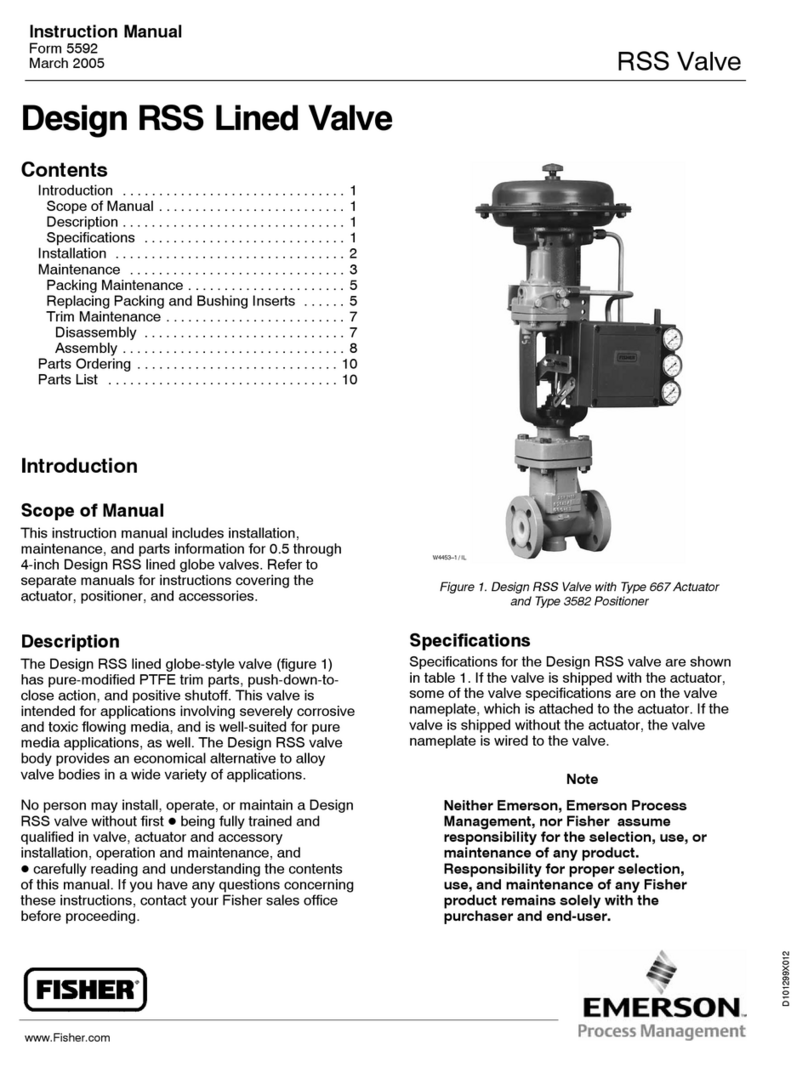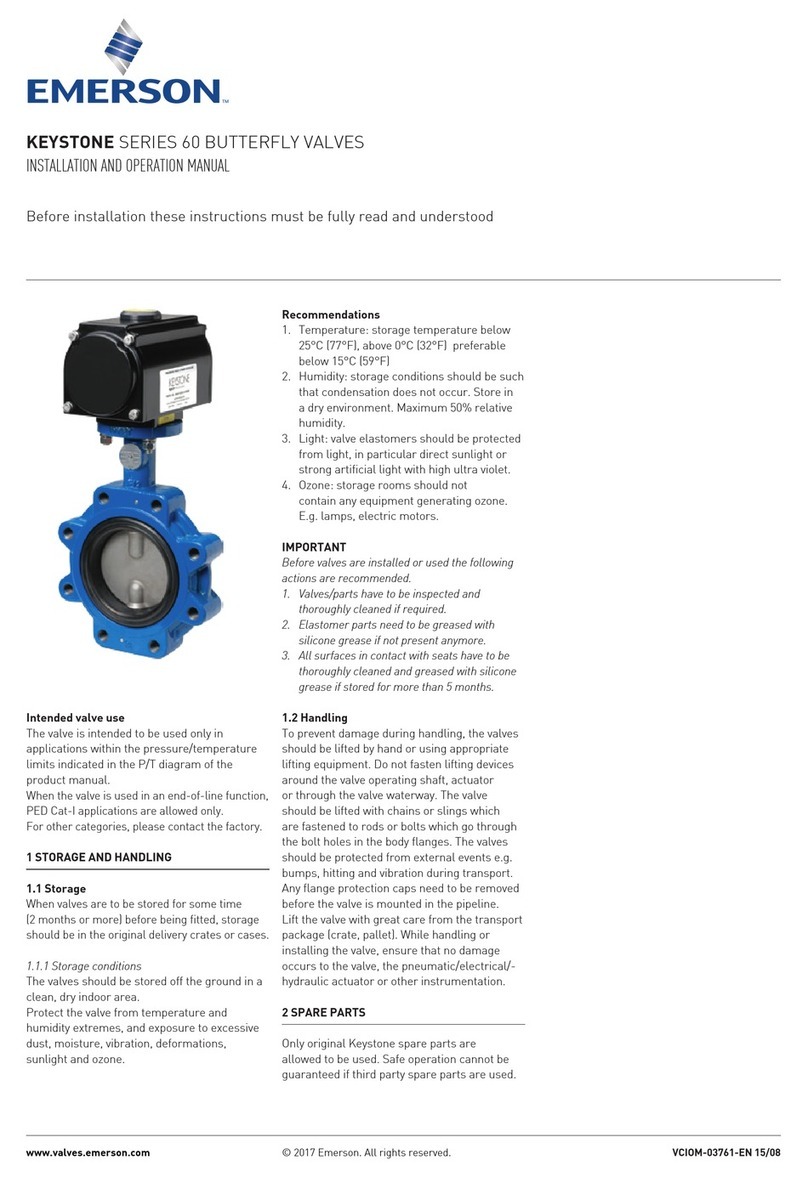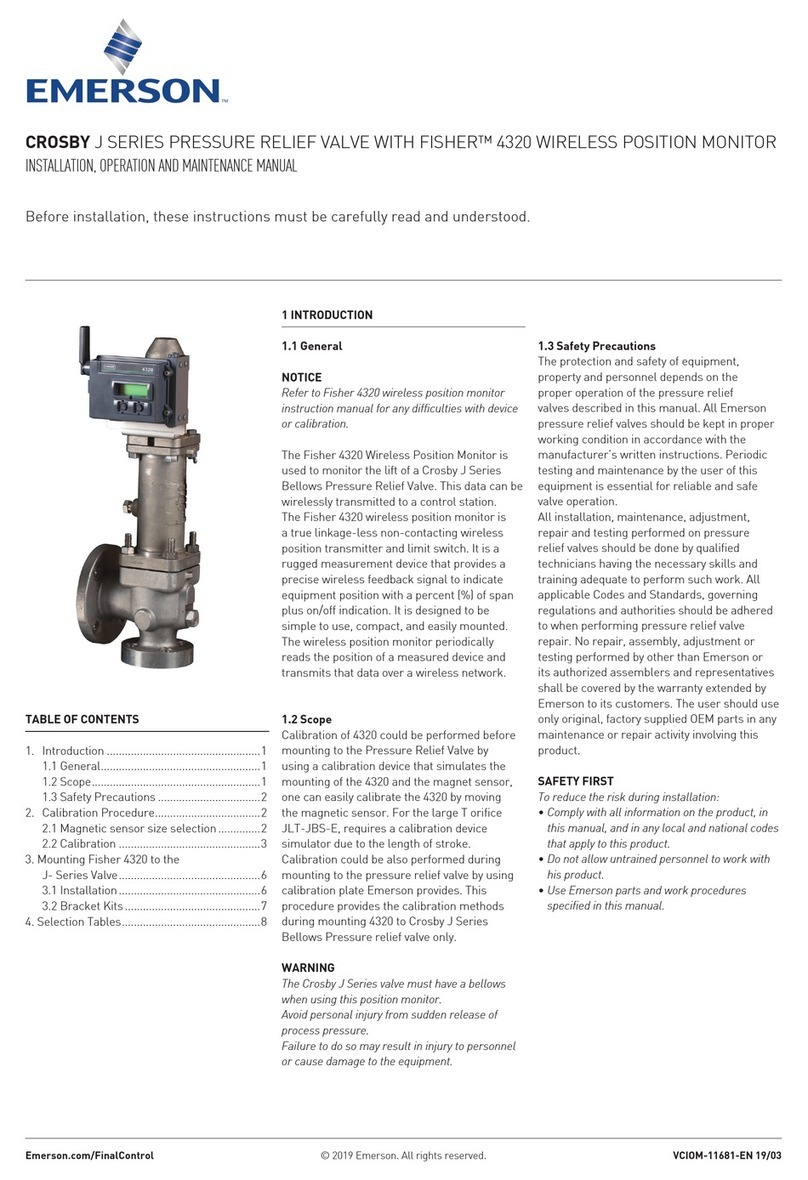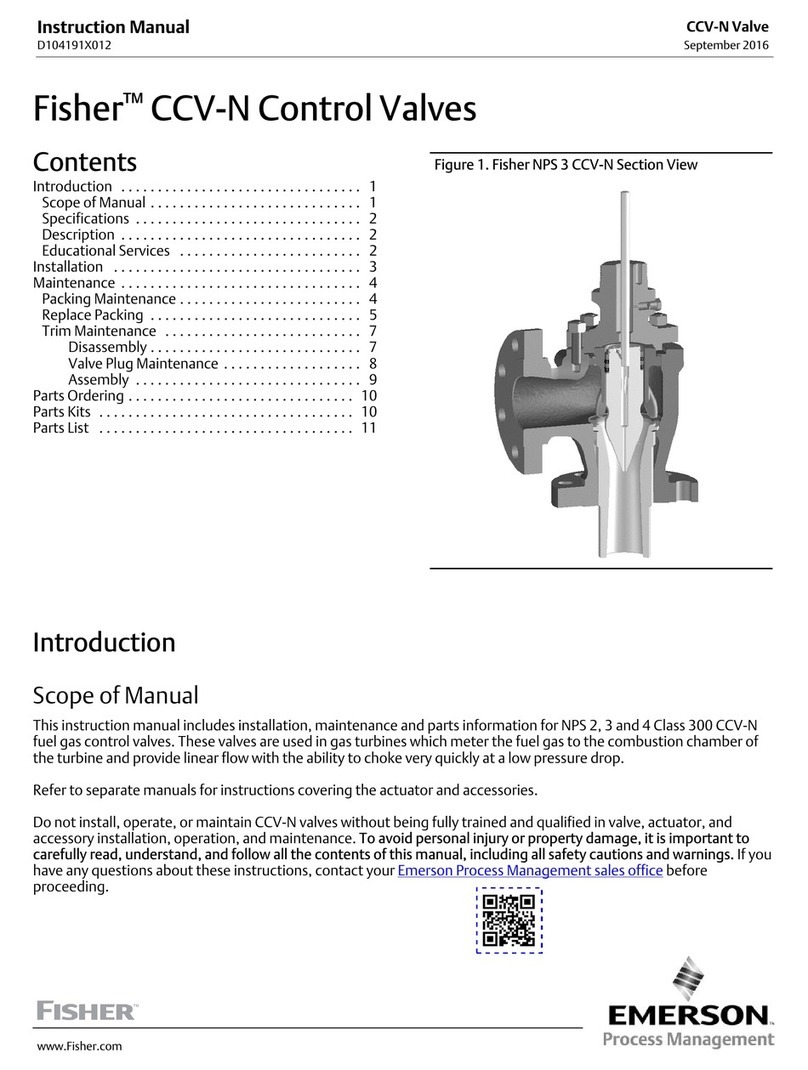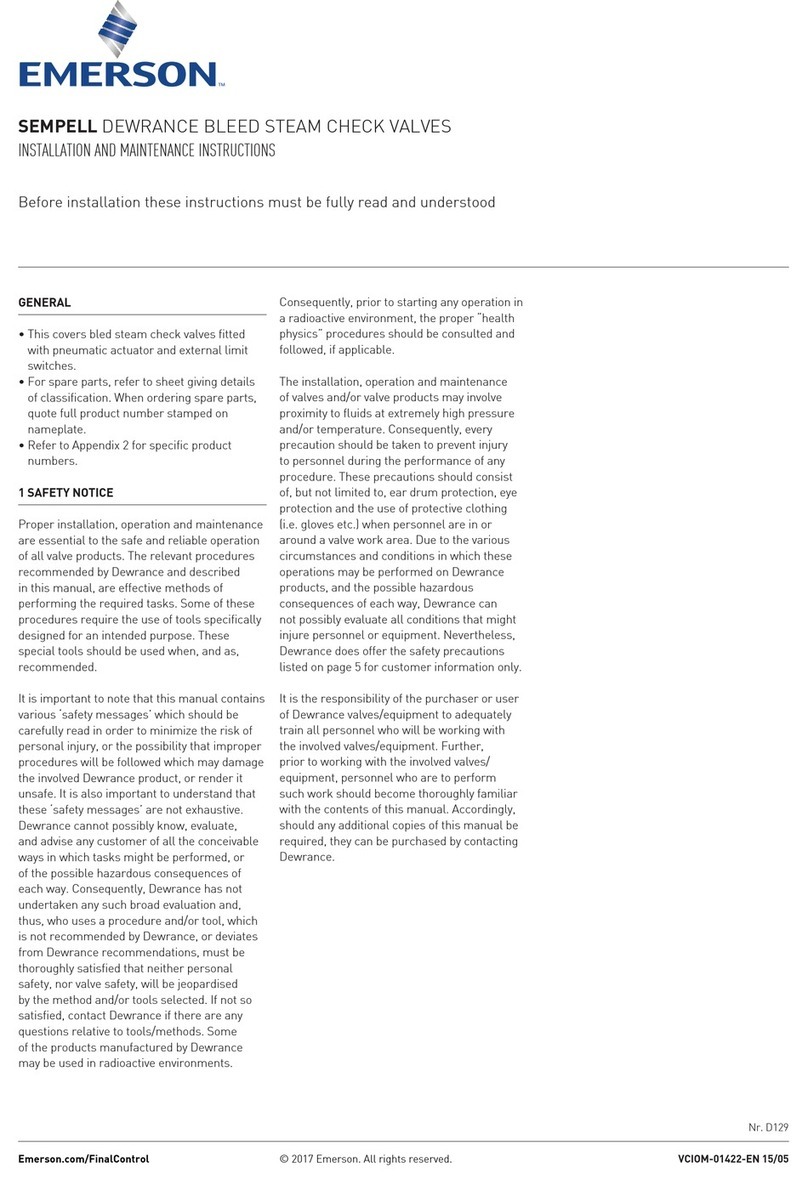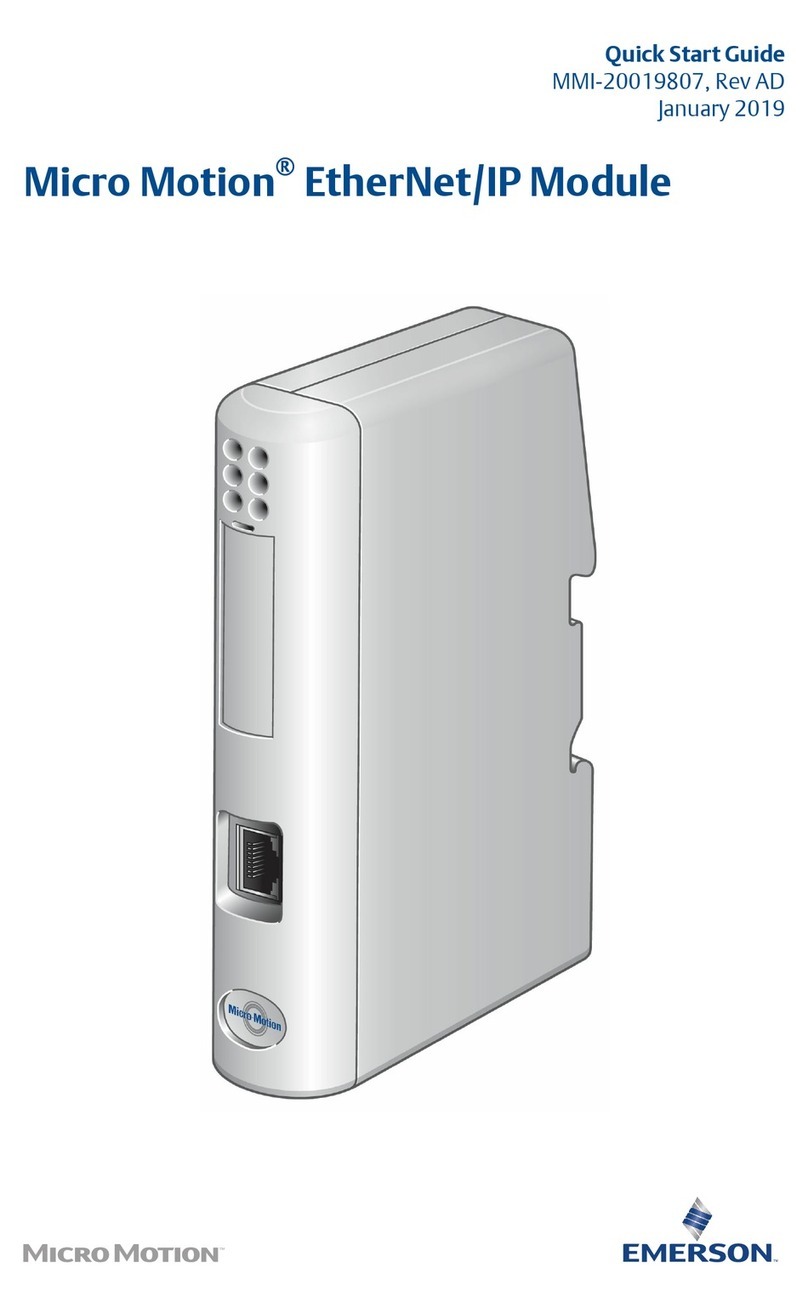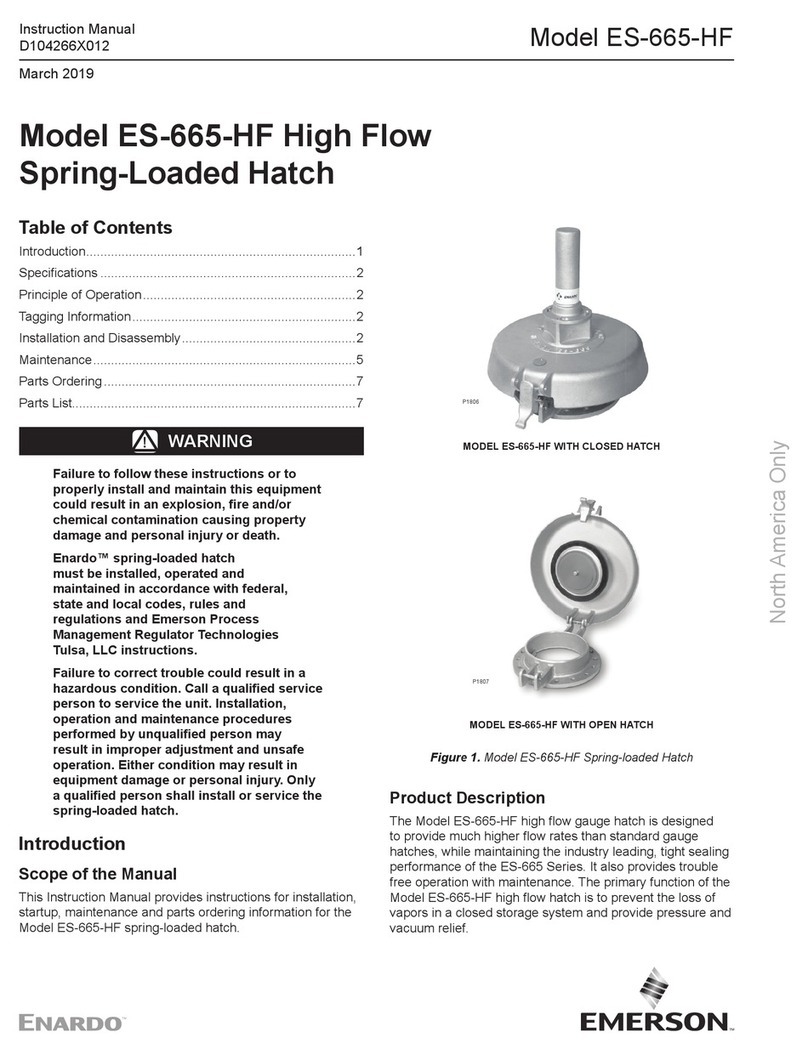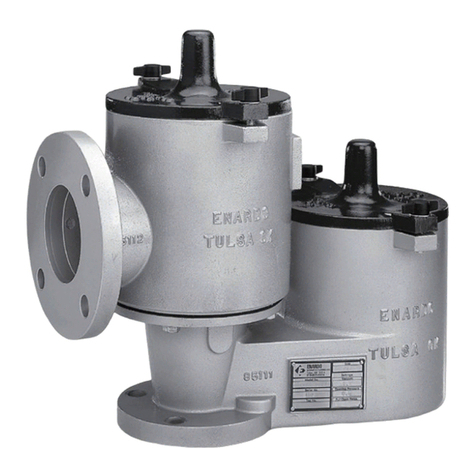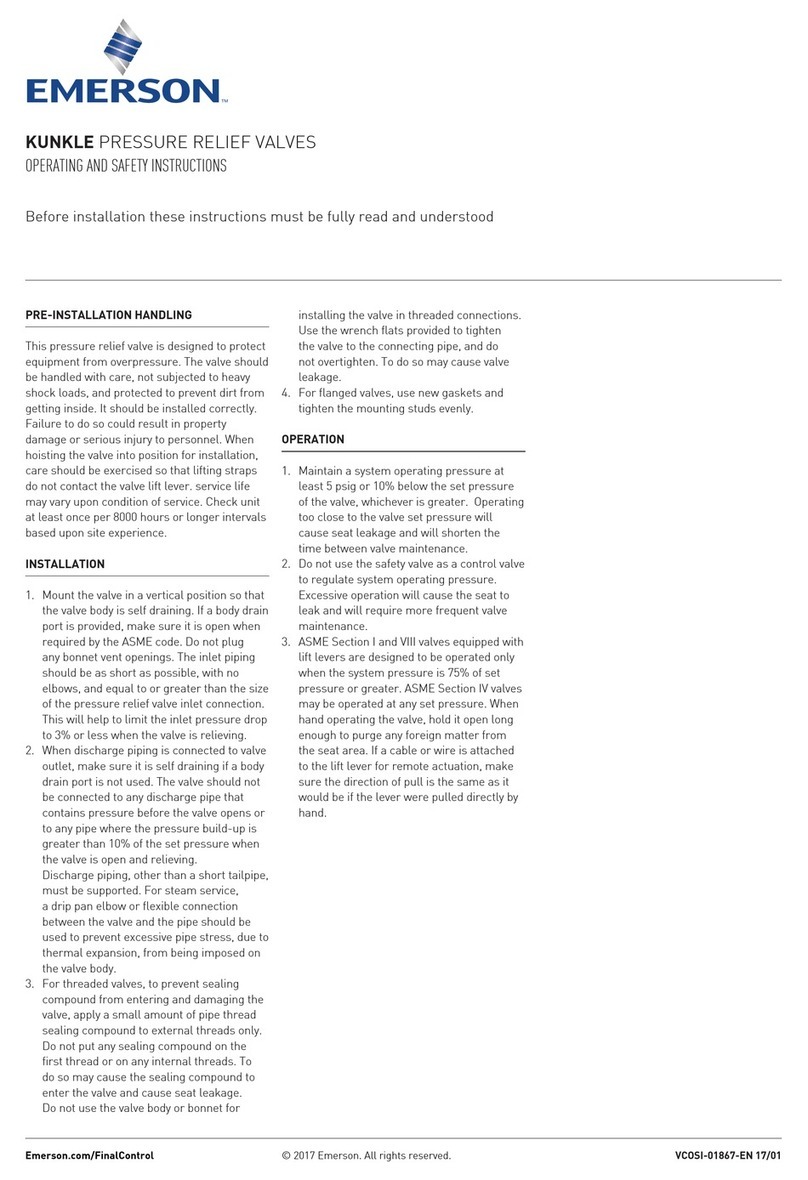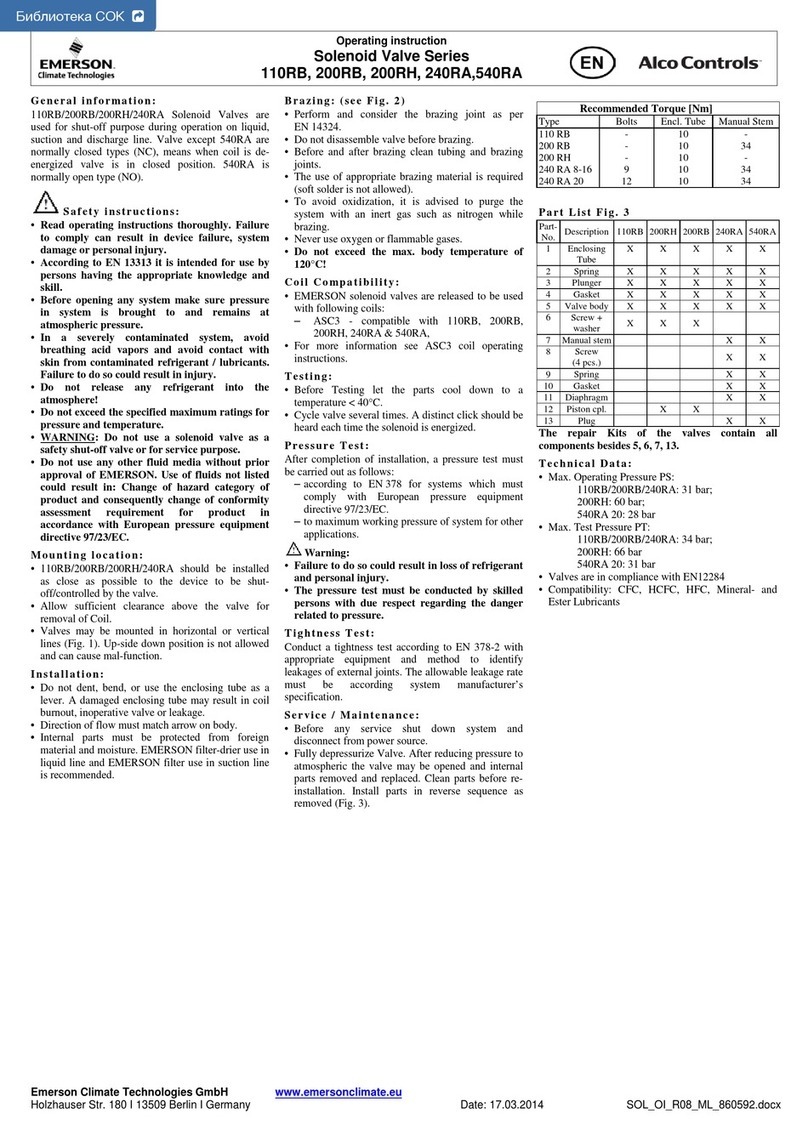
7
Type 63EGLP/63EGLP-16
2. For Type 63EGLP: Use the lifting sling (key 50)
wrapped around outlet flange (as shipped) to lift the
Type 63EGLP when installing the unit. After installing
the valve on the tank, install rain cap (key 51)
on outlet flange. Ensure that the valve is in the
vertical-up orientation with flow through it matching
the direction of the arrow on the main valve body. An
upstream control line is not required because of the
integral pilot supply tubing.
For 63EGLP-16: Carefully lift the Type 63EGLP-16,
avoid lifting by the pilot assembly. After installing
the valve on the tank, ensure the valve is in the
vertical-up orientation with flow through it matching
the direction of the arrow on the main valve body.
Exercise care to ensure that the hex nipple (key 48)
at the valve body is not cross threaded with tank
coupling. An upstream control line is not required
because of the integral pilot supply tubing.
▲ WARNING
Type 63EGLP/63EGLP-16 Relief Valves
vent gas from the main valve outlet and
from the pilot exhaust. In hazardous or
ammable gas service, personal injury,
death or property damage may occur
due to re or explosion of accumulated
vented gas.
To prevent such injury or damage, vent the
gas to a safe location. Design and install
exhaust piping to guard against excessive
ow restriction. Protect the pilot vent and
exhaust piping from condensation or
debris that can clog it.
3. If system operation is necessary during maintenance
or inspection, one pilot valve can be isolated while
the other pilot valve actively loads the main valve
body to continuously protect the system. If service
to the main valve body is required, remove the
upstream pressure.
4. Install a relief valve so that the pilot will exhaust
properly and into a safe place. The pilot spring case
vent must be kept open to atmospheric pressure.
Protect this vent from icing, moisture or other
blockage as required. If the vent assembly (key 16)
remains in the pilot exhaust port (connection A,
Figure 5), it must be pointed down if possible or
otherwise protected.
5. If the exhaust is to be piped to the main valve outlet
or remotely vented, remove the vent assembly
and install obstruction-free tubing or piping with a
minimum number of bends into the 1/4 NPT pilot
exhaust connection. Provide protection on a remote
vent by installing a screened vent cap into the remote
end of the vent pipe.
6. If using pipe, apply a good grade of pipe compound
to the male pipe threads before making the
connection. Install tubing or piping into the
appropriate pilot connection.
7. The set pressure of a unit is adjusted by changing the
control spring compression on the pilot valve.
8. The pilot valve is factory-set for the pressure set-point
specified on the order. Some certifications require the
adjusting assembly be protected from tampering and
will come factory-installed with a tamper-evident wire
seal. These units are not adjustable.
Dual Pilot-Valve Active Monitoring
The Type 63EGLP/63EGLP-16 Pressure Relief Valve
with dual-pilot assembly is shipped from the factory with
the handle assembly, (key 48), pointing to one pilot valve,
or the other. In this operating mode, it has an active
pilot and a standby pilot. Only the active pilot senses the
changes in the inlet pressure. The handle assembly is
always pointing away from the active pilot.
The Type 63EGLP/63EGLP-16 Bulk Storage Relief Valve
can be adjusted for use with BOTH pilot valves active,
by placing the 3-way ball valve selector handle (key 48)
in the middle position. When the 3-way selector valve
handle is in the middle position, then both pilot valves are
in an active mode to sense tank (upstream) pressure and
will operate normally for start-to-discharge and reseal of
the main valve.
While operating in this mode with the 3-way selector
valve handle in the middle position, even if one pilot
valve’s exhaust discharge port is blocked and unable
to discharge loading pressure, the alternate pilot will
continue to actively sense upstream (tank) pressure and
begin to discharge loading pressure per its set-point.
This allows the main valve body to begin to relieve tank
pressure at the alternate pilot valve’s set-point.
The attached figure represents the pilot valve assembly
and 3-way selector ball valve handle in the above
described middle position.
To check for proper positioning and orientation of the
3-way selector valve in the middle position, see Figures
7, 8 and 9 for the location of the “T” symbol on the small
valve stem of both 3-way ball valves. The small “T”
symbol on the ball valve stems must indicate the same
direction and flow path to all 3 valve ports on a given
3-way valve, while the handle assembly (key 48) is in the
middle position.

